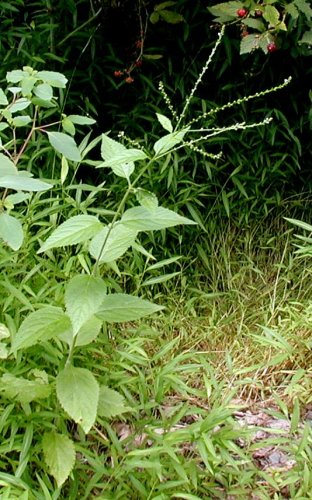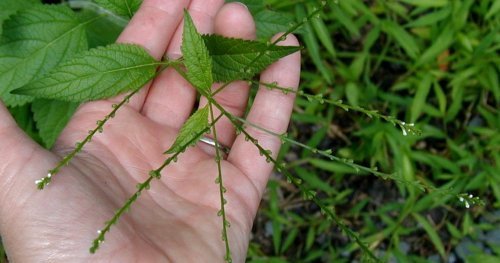A new plant caught my eye last week as I walked down the lane to pick a couple hands full of blackberries. It reminded me of Lopseed because it had a similar arrangement of very small flowers on spikes that arose from leaf axils and from its terminal stem.

No flowers were open early in the day when I took these pics as the plant was still mostly shaded, but they are tiny, white, five-petaled and joined at the base.
Several pairs of opposite leaves are toothed and egg-shaped. Stems are hairy, but not prickly.
The habitat is mostly shady where this White Vervain, Verbena urticifolia, is growing as trees are all along the lane. At the lane’s edge it receives part sun at mid-day.

Photo taken 11 August 2008 shows the flowers arranged in spikes and the opposite leaves of White Vervain.

Hairy stem and toothed leaf of White Vervain.
White Vervain doesn’t appear to have any medicinal properties, but close relatives do. Leaf tea of Blue Vervain, Verbena hastata, was used by Native Americans to treat cold symptoms and gastrointestinal problems. The seeds were roasted and ground to create flour. European Vervain, Verbena officinalis, tea is still used for a number of ailments. It has been studied in China and Russia and found to have analgesic, anti-inflammatory and diuretic properties.
Ah – I use all and any species of Verbena which I can lay my hands on. Use away!
Henriette, I found only one plant and will let it sow its seeds this year. Perhaps next year we’ll have a few more plants to use. It’s great to know that the White Vervain can be used as well as the Blue and European kinds.
I’ll be looking around for more Verbena on my wildflower walks!